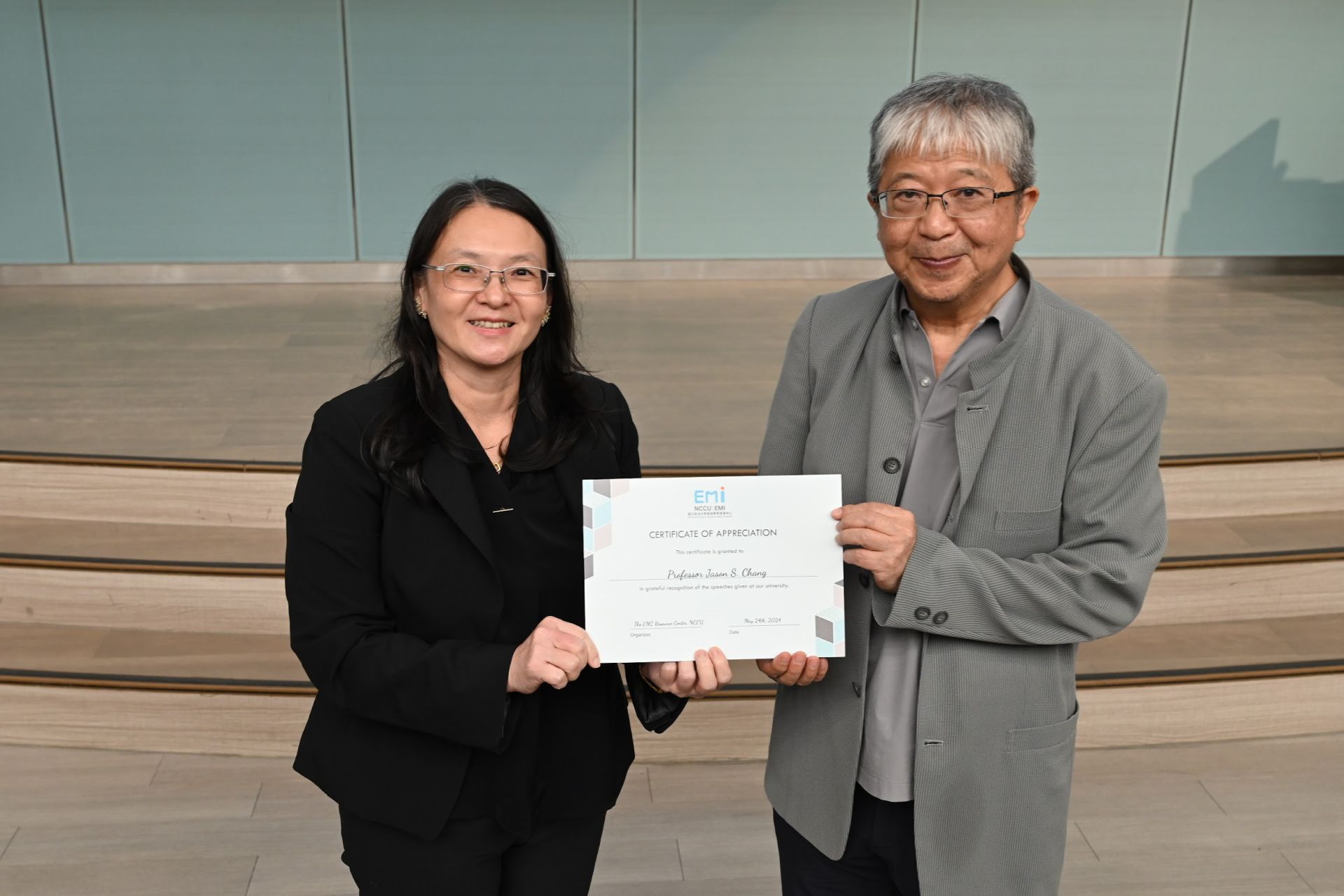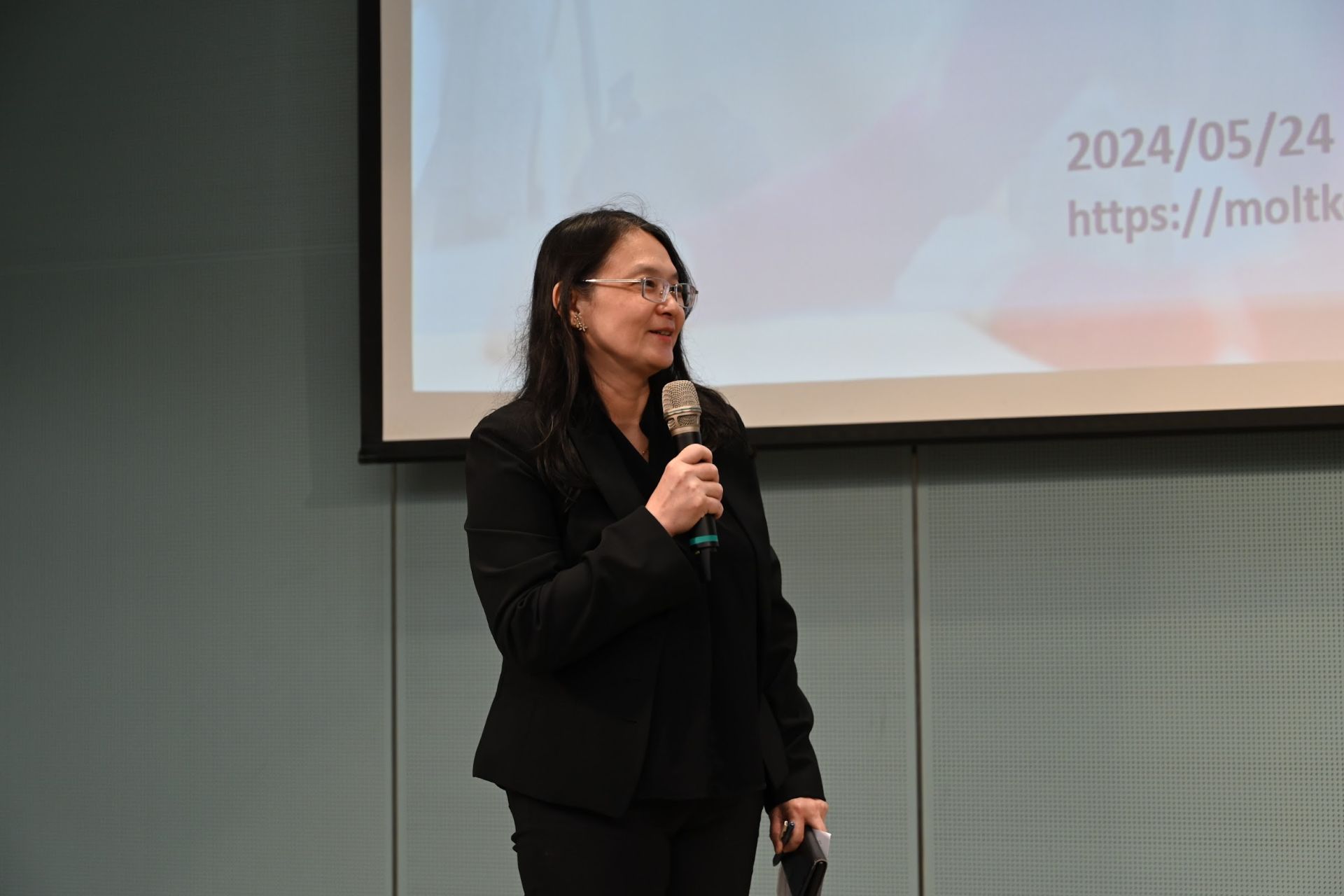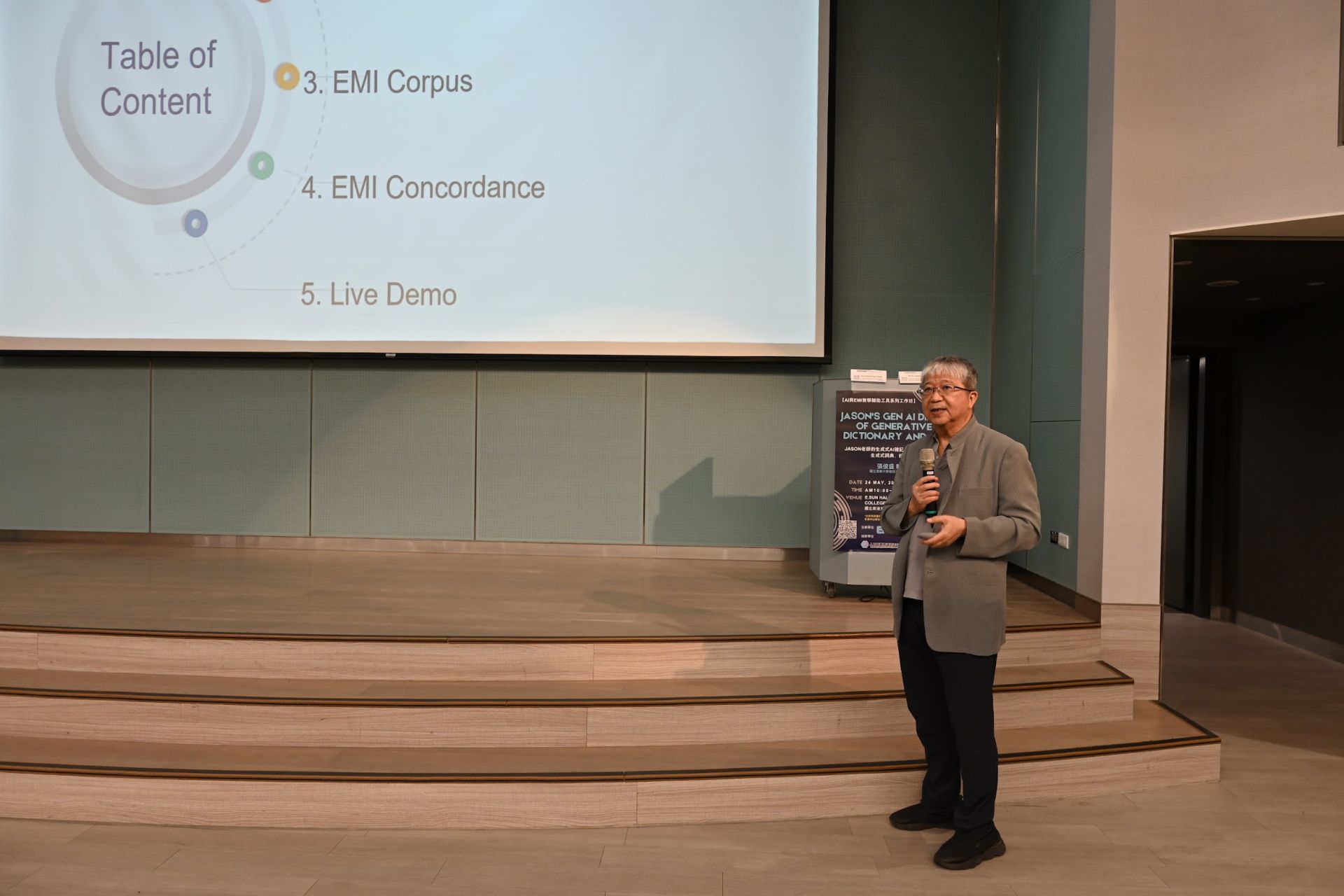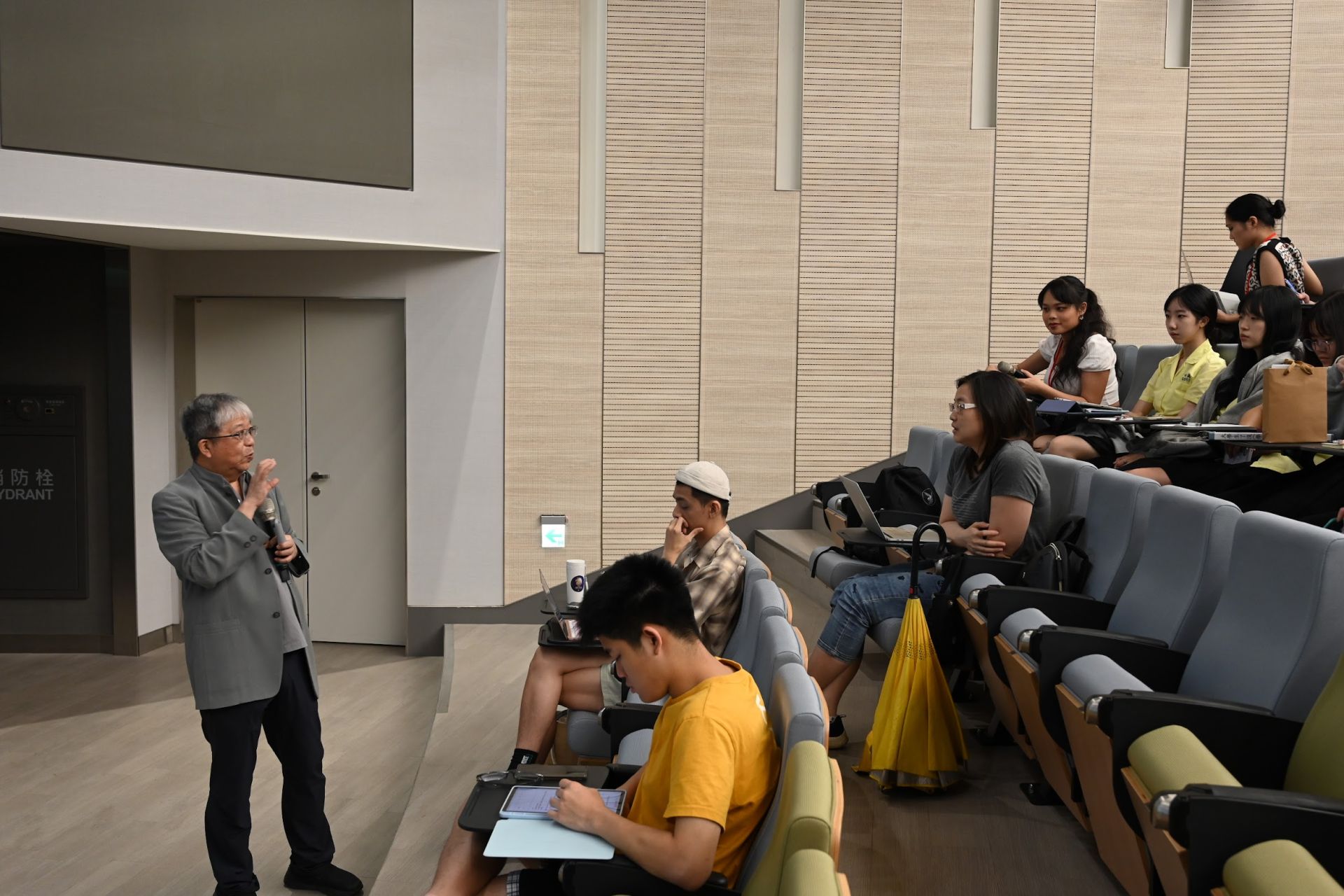“The Quest for AI Begins with Dreams” – How Generative AI Benefits English Teaching and Learning by Use of Generative Dictionary and EMI Corpus
【Article by EMI Resource Center】
On the morning of May 24th, 2024 (Friday), Professor Jason S. Chang from the Department of Computer Science at National Tsing Hua University was cordially invited to give a lecture entitled 'Jason's Gen AI Diary of Generative Dictionary and EMI.' This event, organized by the EMI Resource Center at National Chengchi University and co-hosted by the Interdisciplinary Artificial Intelligence Center and the Bilingual Education and Multicultural Promotion Office at National Chengchi University, took place in the E. Sun Hall at the College of Commerce, NCCU. The lecture provided an insightful introduction to how AI technology can be used to effectively assist in reading, writing, and teaching in EMI. It attracted a wide range of audience members, including professors, graduates, undergraduates, language teachers, high school students, and the general public. Additionally, dozens of participants from other universities joined the lecture online. The event was opened by Professor Siaw-Fong Chung, the Center's director, who regarded Professor Chang as one of the computer science professors most dedicated to English language teaching and expressed her sincere gratitude for his contributions to the field.
Prof. Chang began his talk with a quote from the book 'The Quest for Artificial Intelligence,' written by Nils J. Nilsson and published by Cambridge University Press in 2009: 'The quest for AI begins with dreams – as all quests do.' He used this quote to emphasize that the current advancements in Generative AI are largely due to the unselfishness, generosity, and altruism of numerous individuals who have pieced together various bits of information. He then proceeded to introduce important tools, such as ChatGPT and large language models (LLMs), from the perspective of popular science. He narrated the differences in perceptions of AI, both optimistic and pessimistic, and discussed the emergence of significant inventions like the World Wide Web, Wikipedia, and the Transformer model over the past few decades.
When it comes to how Generative AI benefits English teaching and learning, the speaker proposed several means: Generative Dictionary, EMI Corpus, and EMI Concordance. Instead of toilsome reading for understanding unknown words in dictionaries, whether online or print, which explain words out of context, Prof. Chang introduced a language learning toolkit called Linggle. Linggle's generative dictionary can explain vocabulary items in context with just a few words, significantly minimizing disruptions to the flow of reading, reducing learners' cognitive load, and enhancing their retention. Additionally, Linggle offers functions such as suggestions for suitable collocations in writing, videos teaching a spectrum of language items, error correction for writing, and personalized essay scoring.
The speaker was deeply convinced that Generative AI is conducive to EMI. For example, open courseware (OCW) from many universities in the US is a typical source of EMI corpus, serving as a useful reference for the language used in teaching English. Notably, Yale University provides YouTube videos and transcripts of 1,073 lessons from 40 courses in diverse disciplines online (oyc.yale.edu). When all transcripts are compiled into a folder, the Linggle Toolkit with Built-in Dictionaries can identify phrases commonly used in EMI lessons. Teachers can find the contexts in which these phrases are used through various means such as Google (by keying in the link 'oyc.yale.edu' in the search engine) or performing a KWIC (key word in context) search in AntConc, selecting transcript files of courses to list such lexical bundles. More refined search results of utterances commonly adopted in EMI lessons, as demonstrated by Prof. Chang, can also be achieved through N-Gram generations using Unix grep.
The enthusiastic interaction between the speaker and participants from various backgrounds, especially in-service language teachers, during the question-and-answer session highlighted the widely recognized and highly acclaimed importance and advantages of utilizing Generative AI in teaching and learning. Therefore, we express our greatest gratitude to Prof. Chang for his inspirational enlightenment on the innovative pedagogical implications of Generative AI in EMI.
For more information, please check our website:
www.eminccu.com
FB:https://www.facebook.com/nccu.emi
IG:https://www.instagram.com/nccu.emi

EMI Resource Center Director, Professor Siaw-Fong Chung (left), presents a certificate of appreciation to Professor Jason S. Chang (right) from the Department of Computer Science at National Tsing Hua University. (Photo by EMI Resource Center)

Professor Siaw-Fong Chung, Director of the EMI Resource Center, introduces Professor Jason S. Chang and his contributions to English language teaching as a computer science professor. (Photo by EMI Resource Center)

Speaker Professor Jason S. Chang explains how Generative AI can be effectively utilized to aid EMI teaching. (Photo by EMI Resource Center)

Participants enter E.Sun Hall in succession for the lecture. (Photo by EMI Resource Center)

Speaker Professor Jason S. Chang interacts with participating students from Taipei JingMei Girls High School. (Photo by EMI Resource Center)

Participants from various backgrounds ask Professor Jason S. Chang many constructive questions during the question-and-answer session. (Photo by EMI Resource Center)
